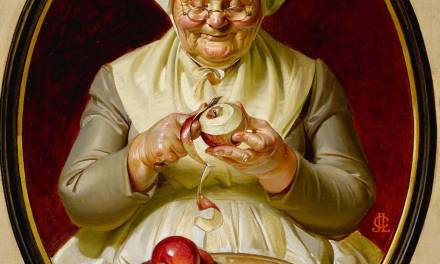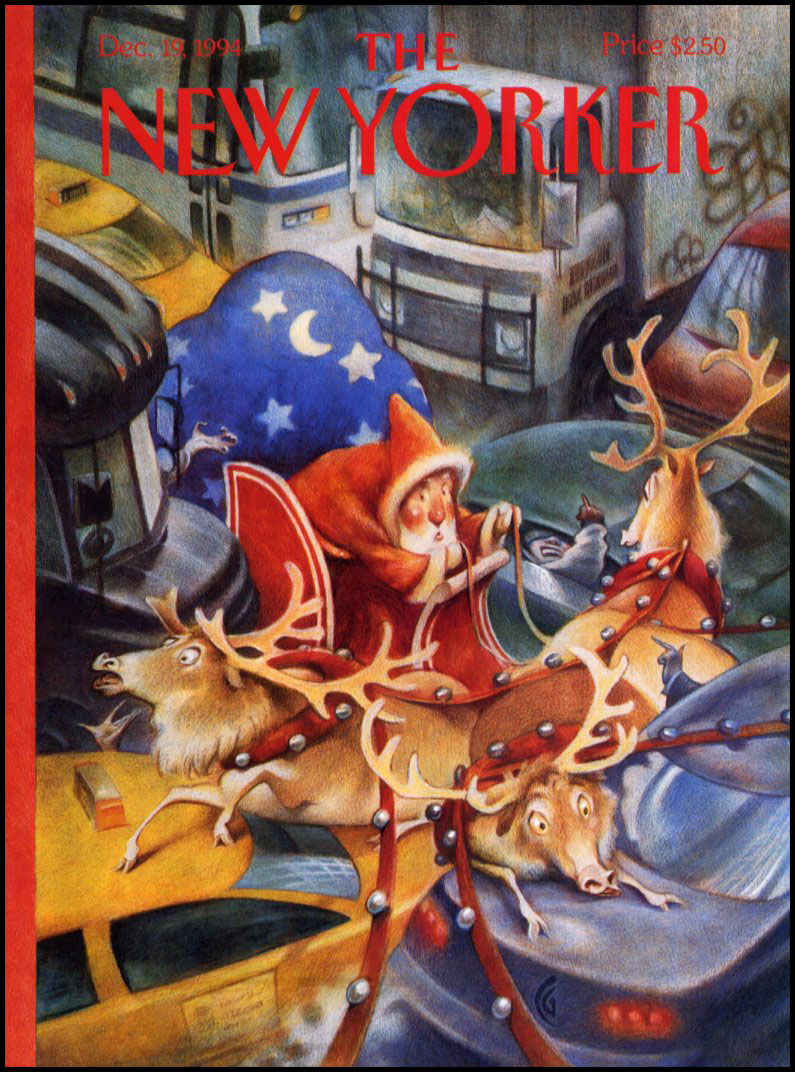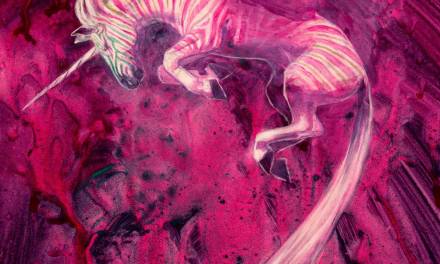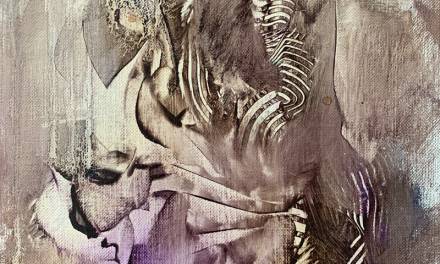By Lauren Panepinto
Two years ago I wrote an article for Muddy Colors about my feelings on agency vs. objectification in SciFi/Fantasy art, and specifically how that applies to how I art direct book covers. I called it The No-Stillettos Rule, and it started a lively discussion both on this blog and on io9.com, who republished it, about trying to figure out where the line is between what makes an image objectifying vs. empowering. The truth of the matter is, it’s very personal, and each person’s line between objectifying and empowering is going to be massively affected by their personal history, education, religion, family, politics, feelings about art, freedom, etc. It’s a complicated stew — one that we’re not going to try to unpack here — and ultimately it’s each person’s right to decide where their line falls. However, I did state, in general, that I feel you can start to distinguish whether a piece of art is meant to be objectifying or empowering by looking at the agency of the character. I used the Frazetta pieces below to illustrate the difference:
 |
| In these images, the women are accessories, trophies, afterthoughts to the men in the scene. They have almost no emotion or action of their own. |
 |
| However, in these images, the women — just as naked as the ones above — have agency in the story of each image. They are acting, they have emotion. That’s agency. |
I want to be sure to call out that this isn’t just a men-objectifying, women-being-objectified issue. Objectification can happen to anyone of any gender, and is a particularly a complicated issue and important discussion in the transgender community. In the history of art, it is overwhelmingly true that the nudes are women and the audience (and the artists) have been male, but time’s are changing and it’s an issue everyone has to think about, especially if you are an image-maker.
Of course, there are people who would disagree and say all the images above are objectifying, just because they are nudes at all. And that’s their right. This stuff is super personal. But it’s not a private issue for artists — it’s a public issue because we are making images of people and putting them out in the world. We can make any artistic decision we want to make — that’s the beautiful thing about art — but we can’t afford to be uneducated about the impact of the images we are making. Which is why I am always rolling around this debate in my head, talking to both artists and models, performers and collectors, and all genders about it.
And the documentary of the process is in rough cut and will be out soon:
Recently Allan has been working on portrait books that feature both women and men posing for nude portraits. However, they are focused on what it means to these models to be posing nude. Most of the models reveal themselves for a living — professional models, body builders, porn stars, burlesque dancers, artist models, performance artists — many of them are objectified for a living, and Allan wanted to give them a place to control their own nudity, to give them agency over how they were revealed. They aren’t playing a role or living up to someone else’s image, they were showing the genuine person underneath those roles. The first project was called Slip: Naked In Your Own Words.
 |
Sash, a professional nude model for Suicide Girls, talks about the differences between what she sees in an artist’s view of her thru a lens, vs. what she sees in the mirror.
|
What I love about Allan is he’s always including great artists in his projects. In Slip’s very successful Kickstarter campaign, he had many artists collaborating to create art with the portraits.
I found it fascinating to read how many different approaches and experiences the models had with their own bodies, how they feel about people seeing them, how they deal with objectification and agency in their images, and how this project and the images empowered them.
Once again, Allan is teaming up with models and artists to provide a platform to explore how we all feel about the nude form, and the struggles we can have with both revealing ourselves, and with viewing others revealed.
Again Allan has teamed up with some amazing artists to do various rewards and covers for the editions:
The SERAPH Kickstarter is live right now, until July 6th, and there are rewards where you can get both Slip and Seraph together. The project is already overbacked, so consider it a pre-order campaign, and the only time you’ll be able to get the artist rewards.
I back and want to promote this project, because these are important conversations to have, and I believe artists work out these debates thru the art they make. I’ve talked to Allan, and he sometimes feels that as a guy taking nude pictures of mostly women, people will automatically feel that he is playing an objectifying role. He prefers to have the women in the project (and the men, of course) speak for themselves about what the images mean to them. While I find that admirable, and applaud artists making room for their models’ and collaborators’ voices when they talk about their project, I think it’s also important for the artist to speak about their motivations too. Allan’s lens is the thing that is making the space for these important debates and discussions and realizations to take place, and I think it’s important to be paying attention to, and supporting, artists and projects who are tackling this very controversial ground head-on.
I worry that sometimes I am on the wrong side of the conversation. As a straight white male who often photographs beautiful women in the nude, it’s easy to see why. I feel very much like these projects are as much about that journey as they are about the images themselves.. expanding the signal to include different voices, different bodies. So what began within SLIP, continues in Seraph, to the best of my abilities, anyway. Sometimes it means something. Sometimes, if I’m lucky, a subject sees something transformative in their image. In SLIP it happened once, and that transcendent moment continues to resonate, beyond the work, beyond the books. So I’ll finger my crosses, and hope to move something again, so that it in turn, moves me.
—Allan Amato
And, full disclosure, I had the honor of being photographed by Allan recently. Marc Scheff & I needed photos for our various Drawn + Drafted projects, and I needed new speaker/bio photos (because the ones I have been using are so outdated my hair isn’t even green), and Allan was amazing to squeeze us in at the end of a long day of shooting. I watched a few of the Seraph shoots happen, and then it was my turn. The story of what happened is very personal, and lives over on Mallory O’Meara’s blog, where we wrote a combined post about being photographed and then having to come face to face with the images of ourselves.
I think J.A.W. Cooper, who is collaborating on cover art and original art for the project, really sums it all up best:
Allan Amato is one of those very rare individuals who is so contagiously curious and enthusiastic about making art that it is impossible not to get pulled in. Even more rare is his ability to pour boundless energy into a creative project and then to trustingly set it free in the hands of another artist. I think it is this drive toward collaboration which sets him apart as a world class photographer. Watching him work with his subjects it becomes apparent that he is able to create such transcendent portraits with an almost heightened sense of reality by harnessing his skill for collaboration to encourage a performance that reveals more than what is skin deep.
Listening to the testimony of the incredible people Allan Amato has photographed for his latest book SERAPH it is undeniable that the significance of his work is in his ability to help people to see themselves profoundly.”
—J.A.W. Cooper







Wow. That was…I don't even know, specifically, I'm still processing it (including the post with Mallory), but it was very powerful, and had me thinking of a bunch of my own issues about my own body, and how I might have handled such a photoshoot, if I could even get myself to do it at all. Thank you for sharing that with us.
You're welcome. It wasn't easy. I couldn't have posted the personal one without Mallory doing it with me.
A really great topic (as always). Personally, these controversial posts are some of my favorites because it really challenges us to look at the mirror and the community and say “is this an issue that needs to be addressed”?
Of course, I've met those who grew up on comics, Frazetta etc and they see nothing wrong with thin wastes, large breasts/buttoxed women (yet have an issue with people who take issue with these visual depictions). And I've met those who are on the complete opposite side of the issue and censor things like its the Counter Reformation.
The art world is a big enough place for all of us and in today's world it's EXTREMELY easy to go into a bubble of like minded people and tell ourselves that we are right. But then no one's views are ever challenged and this leads to stagnation.
Personally, nude or clothed, if you have any character (woman, man or other) in a picture as eye candy (aka sex appeal) then I am not interested because that is not a character. Is just a shallow way to peak a viewers interest through primal sex appeal. As far as nudity itself being objectifying, we all here have seen sooooooo much art or produced so much art that for the most part we get it. Most of us here know the historical context of it, have produced figure drawings etc. The general population/ non artist…. most likely does not. Most of their exposure to nudity is from snapchat, instagram, pornography etc and (not to continue generalizing too much) have probably seldom been to an art museum or had few art classes due to lack of funding. So (as you mentioned Lauren), education definitely plays a role in society's perception of nudity, male or female, objectifying or not.
Also, what Arabelle says about models who pose nude are not always as confident as they may seem. I've met or worked with several models who said the whole reason they decided to start modeling in the first place or transition into nude modeling was to hopefully find acceptance in themselves. To see themselves how others see them. It can be very liberating indeed.
This article in conjunction with the one you posted about your personal experiance in front of the lense were so touching, well written, and resonated so strongly with me! I'm also painfully PAINFULLY camera shy and having Allan Amato take my photo for the Temple of Art project was so terrifying but the results were the absolute best photos of me I've ever seen. I felt like the photos he took look more like who I am than what I am. Thank you so much for writing about this project and your personal experiance in front of the camera as well!
I found that angle really fascinating in the video too…I never thought that modelling would be the WAY people got over their insecurities, or faced them, but that makes perfect sense.
As far as objectified images, I'm not ready to throw the baby out with the bathwater. I still love my 50s pinups, and such. Proper time and place, you know? The important thing, I think, is for image-makers to know the difference, and be able to choose the purpose and tone they want for each situation.
It IS terrifying, right? But Allan was amazing. Great mix of professional and helpful…I probably would have been more comfortable if he had told me EXACTLY how to pose, but then, it wouldn't have evoked me in the photos…just his vision of me. Where it might have been just as beautiful (and probably more so) it wouldn't have been as true.
Precisely. We can't really look at older art and expect it to conform to our current morality (how many pieces of great master work was ridiculing a particular religious group, race or gender. Twas the times). All we can do is look at it and say “it may have been fine then but it doesn't fly now”. Continue to have to difficult talks because that is how we begin to develop a more focused and unified viewpoint with these issues.
“Continue to have to difficult talks because that is how we begin to develop a more focused and unified viewpoint with these issues.”
Respectfully—and perhaps this is a simple disagreement with semantics—but something I find potentially dangerous in the breadth of creative endeavor would be a societal “unified viewpoint” on issues of expression, thought, and art.
Whose viewpoint?
I encourage and applaud any person coming to understand why another sees things or feels as they do. To appreciate the differing prisms of time and place that color our beliefs and perceptions, and distinguish them as well. But as far as art and personal expression are concerned… I believe a “unified viewpoint” would lead to a creative dead end.
Again, that could be a simple issue of semantics, but I felt what I inferred from the line as written merited a considered dissent.
Thomas, that's my fault for writing that line inaccurately. To clarify, yes there a hundreds, thousands and even millions of viewpoints attributed to each and everything on this planet. If you believe in qualia and it's inability to be replicated, than literally everything has a unique perspective for as many people there are on this earth. This is VERY nuanced though. If we polled everyone on Earth, there would certainly be larger over arching viewpoints based on region, religion, education etc (as Lauren put it in her post). So even if there are 7.5 billion viewpoints on a single issue (lets say this article), the difference are most likely so slight that the nuances fade away unless heavily scrutinized and analyzed. What I originally meant by that line was tolerance. The ability for someone not use their subject experiences as an excuse to feel superior in an argument (“I had this happen to me so I'm an authority on x issue”).
I personally do not see an objective conclusion to any of these viewpoints on any issue, because at the end of the day these views are human perceptions that were invented by Humankind. So given that it's all subjective, I much rather just have open and honest discussions and intellectual growth from these topics. Because if we all had one viewpoint… that would just be bloody boring.
P.s good catch on that! Sometimes it's difficult to remember to write what you know you mean for people who don't know what you mean
Really thought-provoking article. Thanks! And just the start of the conversation, really. Objectification and exploitation (mainly of women) is really the elephant in the room in so much fantasy art, comics and related fields. As you suggest, the issue of agency is one good way to assess this. Another might be prurience, as related to older debates about kitsch- or non-kitsch art. In other words, is this image simply giving people what they want (at a pretty crude level of sex and domination) without offering anything of substance? In terms of the latter, surface flash and dazzling technique (Frazetta, say) apparently go a long way in satisfying an awful lot of us. Yet the metaphor of junk food is apt: overtly attractive on the surface, and attracting hordes of consumers, but with nothing substantial or even healthy actually on offer. Guilt is constantly hovering over your shoulder when you are looking at so many of these images …
Wow. That was…I don’t even know, specifically, I’m still processing it (including the post with Mallory), but it was very powerful, and had me thinking of a bunch of my own issues about my own body, and how I might have handled such a photoshoot, if I could even get myself to do it at all. Thank you for sharing that with us.